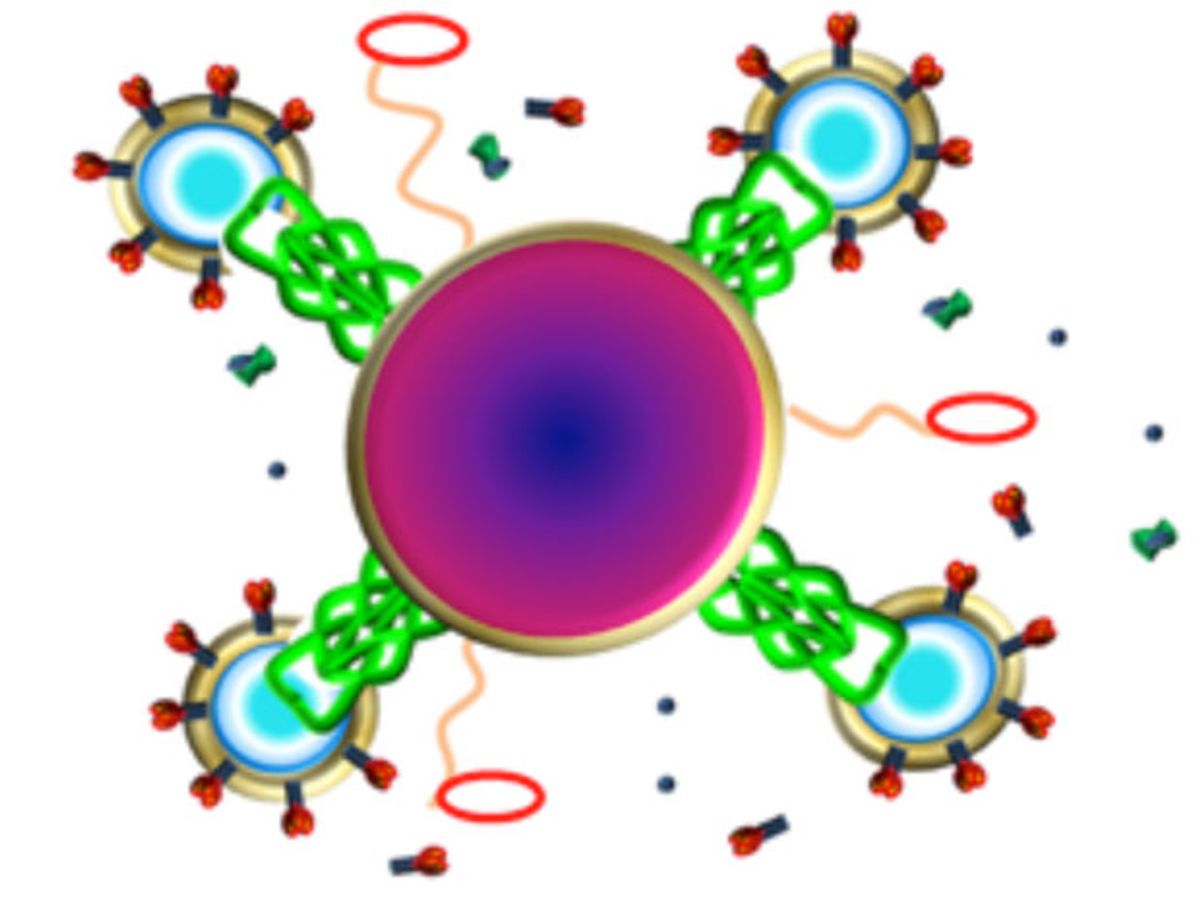Nanoparticles are proving themselves effective carriers, delivering therapies within the human body.
Last year, nanoparticles carrying biological components proved effective as anti-viral treatments for Hepatitis C. And some years back, research also demonstrated that attaching short-interfering RNA (siRNA) molecules to a biodegradable polymer nanoparticle was effective in the treatment of sexually transmitted diseases, like the human immunodeficiency virus (HIV).
Now researchers at the Washington University in St. Louis have attacked HIV more directly. They have shown that a nanoparticle carrying bee venom effectively destroys HIV while leaving surrounding cells unharmed.
The research, which was published in the journal Antiviral Therapy ("Cytolytic nanoparticles attenuate HIV-1 infectivity"), employed a nanoparticle that had previously been abandoned when it proved ineffective for delivering oxygen to blood cells. But in its new role, carrying the toxin melittin, a poison found in bee venom, it is extremely effective at breaking down the essential structure of HIV.
“We are attacking an inherent physical property of HIV,” says Joshua L. Hood, MD, PhD, a research instructor in medicine at Washington University in a press release. “Theoretically, there isn’t any way for the virus to adapt to that. The virus has to have a protective coat, a double-layered membrane that covers the virus.”
While the melittin-carrying nanoparticles rip apart HIV, they leave surrounding cells untouched because Hood equipped the surface of the nanoparticles with what the press release calls "protective bumpers." These bumpers are spaced on the surface so that the normal cells—which are larger than the HIV—won’t fit between them and just bounce off the nanoparticle, untouched by the toxin inside it. The HIV on the other hand doesn’t enjoy such a benign fate. They fall between the bumpers and are ripped apart by the melittin toxin.
“Melittin on the nanoparticles fuses with the viral envelope,” Hood says in the release. “The melittin forms little pore-like attack complexes and ruptures the envelope, stripping it off the virus.”
This approach to destroying HIV stands in contrast to most current approaches to HIV treatment, which aim at merely inhibiting the replication of the virus. This new approach is a ‘scorched-earth’ approach in which every last HIV cell is targeted for eradication.
The researchers are targeting their HIV-destroying nanoparticle for use in vaginal gels, initially for use in populations that have rampant HIV infections. However, the nanoparticle may not be limited to prevention but as a cure for those already stricken with the virus. In these cases, the nanoparticles would be injected intravenously into the bloodstream where they would circulate and kill any HIV.
Hood also believes that the ability of the melittin to attack any virus with a double-layered membrane makes it a potential treatment for hepatitis B and C, which have the same protective coatings that HIV possesses.
Image: Joshua Hood, MD, PHD
Dexter Johnson is a contributing editor at IEEE Spectrum, with a focus on nanotechnology.




